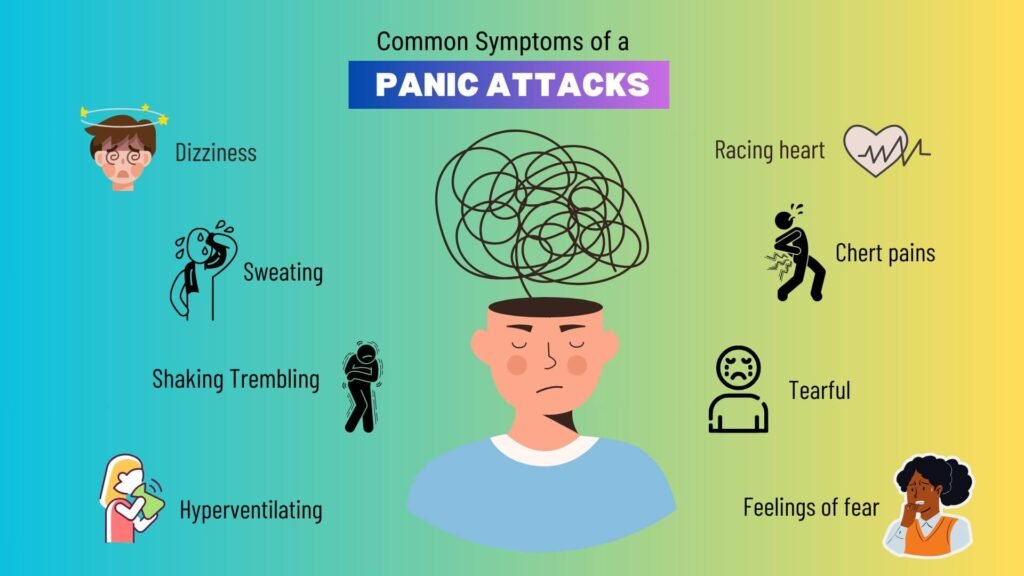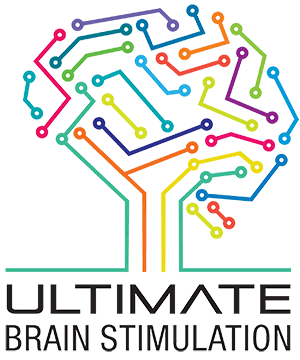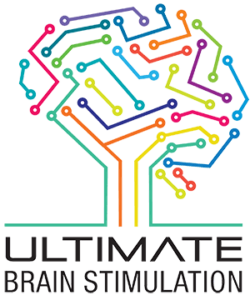Introduction
Panic disorder is a debilitating condition that affects millions of individuals worldwide. As a senior neuropsychiatrist with over 40 years of experience, I, Dr. Murugappan, understand the profound impact this disorder can have on a person’s life.
At the Ultimate Brain Stimulation Clinic in Chennai, we offer advanced treatments for panic disorder, including the innovative QEEG brain mapping technique.
In this article, I will provide valuable insights into panic disorder, its symptoms, and the treatments available at our clinic to help you or your loved ones manage and overcome this condition.
What is Panic Disorder?
Panic disorder is characterized by sudden and repeated episodes of intense fear, accompanied by physical symptoms that can mimic a heart attack or other serious medical conditions.
These episodes, known as panic attacks, can occur without warning and often leave individuals feeling overwhelmed and frightened.

Common Panic Disorder Symptoms
Understanding the symptoms of panic disorder is crucial for timely diagnosis and treatment. Here are some common symptoms to watch out for:
- Sudden Onset of Intense Fear: Individuals with panic disorder often experience an abrupt surge of overwhelming fear or discomfort, typically peaking within minutes.
- Physical Symptoms: These can include rapid heartbeat, sweating, trembling, shortness of breath, chest pain, nausea, dizziness, chills, or hot flashes.
- Psychological Symptoms: Feelings of impending doom, losing control, or going crazy are common psychological manifestations during a panic attack.
- Avoidance Behavior: To prevent future attacks, individuals might avoid certain places or situations that they associate with previous panic episodes.
- Persistent Worry: There is often an ongoing concern about when the next attack might occur and its potential consequences.
Diagnosis and Treatment of Panic Disorder
At the Ultimate Brain Stimulation Clinic, we use state-of-the-art diagnostic tools and personalized treatment plans to address panic disorder effectively.
Quantitative Electroencephalogram (QEEG) Brain Mapping
QEEG, or Quantitative Electroencephalogram, is a revolutionary technique we utilize to map brain activity. This non-invasive method involves placing sensors on the scalp to measure electrical activity in the brain. The data collected provides a detailed picture of brain function, highlighting areas of imbalance or dysfunction.
Benefits of QEEG Brain Mapping:
- Accurate Diagnosis: QEEG helps identify specific brain patterns associated with panic disorder, allowing for a more accurate diagnosis.
- Personalized Treatment Plans: By understanding the unique brain activity of each patient, we can tailor treatment plans to target the root causes of their symptoms.
- Monitoring Progress: QEEG enables us to track changes in brain activity over time, helping us assess the effectiveness of treatments and make necessary adjustments.
Steps in QEEG Treatment
QEEG brain mapping is a multi-step process that ensures a thorough understanding of brain function. Here are the steps involved:
- Initial Consultation: The process begins with an in-depth consultation to understand the patient’s history, symptoms, and concerns. This helps in tailoring the QEEG procedure to the individual’s needs.
- Preparation: Before the QEEG session, the patient’s scalp is prepared, and electrodes are placed on specific locations on the head. This preparation ensures accurate readings of brain activity.
- Data Collection: During the session, the patient is asked to relax and possibly perform certain tasks while the electrodes capture electrical activity from different brain regions. The data collected represents various brainwave patterns.
- Data Analysis: The recorded brain activity is then analyzed using specialized software to produce detailed brain maps. These maps highlight areas of the brain that may be overactive, underactive, or showing atypical patterns.
- Interpretation and Diagnosis: The brain maps are interpreted by trained professionals to identify any abnormalities or patterns associated with panic disorder. This interpretation helps in creating a precise diagnosis.
- Treatment Planning: Based on the findings from the QEEG, a personalized treatment plan is developed. This may include a combination of therapies such as neurofeedback, cognitive behavioral therapy (CBT), and medication management.
- Implementation and Monitoring: The treatment plan is implemented, and the patient’s progress is monitored over time. Follow-up QEEG sessions may be conducted to track changes in brain activity and adjust treatments as needed.
Cognitive Behavioral Therapy (CBT)
Cognitive Behavioral Therapy is a cornerstone in the treatment of panic disorder. This therapeutic approach helps individuals identify and challenge negative thought patterns and behaviors that contribute to their anxiety. Through CBT, patients learn coping strategies and techniques to manage their symptoms and prevent future attacks.
Medication Management
In some cases, medication may be prescribed to help manage panic disorder symptoms. Antidepressants and anti-anxiety medications can be effective in reducing the frequency and severity of panic attacks. Our team of experts will work closely with you to determine the most appropriate medication and dosage based on your individual needs.
Neurofeedback Therapy
Neurofeedback is an advanced therapeutic technique that uses real-time monitoring of brain activity to help patients gain control over their brain function. By providing immediate feedback, neurofeedback allows individuals to learn how to regulate their brain activity, reducing anxiety and improving overall mental health.
Lifestyle Changes and Self-Help Strategies
In addition to professional treatment, certain lifestyle changes and self-help strategies can significantly improve the management of panic disorder symptoms. Here are some recommendations:
- Regular Exercise: Engaging in physical activities such as walking, running, or yoga can help reduce anxiety and improve overall well-being.
- Healthy Diet: A balanced diet rich in fruits, vegetables, whole grains, and lean proteins can positively impact mental health.
- Adequate Sleep: Ensuring you get enough restful sleep each night is essential for managing anxiety and stress levels.
- Mindfulness and Relaxation Techniques: Practices such as meditation, deep breathing exercises, and progressive muscle relaxation can help calm the mind and reduce the frequency of panic attacks.
- Support Network: Building a strong support network of friends, family, or support groups can provide emotional support and encouragement.
Conclusion
Panic disorder can be a challenging condition to live with, but effective treatments are available. At the Ultimate Brain Stimulation Clinic in Chennai, we are dedicated to providing comprehensive and personalized care to help our patients manage and overcome this disorder.
Through advanced techniques like QEEG brain mapping, Cognitive Behavioral Therapy, medication management, and neurofeedback, we strive to improve the quality of life for those affected by this condition.
Make an Appointment Today!
Call us at(+91)9444437698!
For more information, visit Ultimate Brain Stimulation Clinic.
Connect on LinkedIn
Watch on YouTube.
Contact us on WhatsApp.
For additional wellness services, check out Silkee.

